News
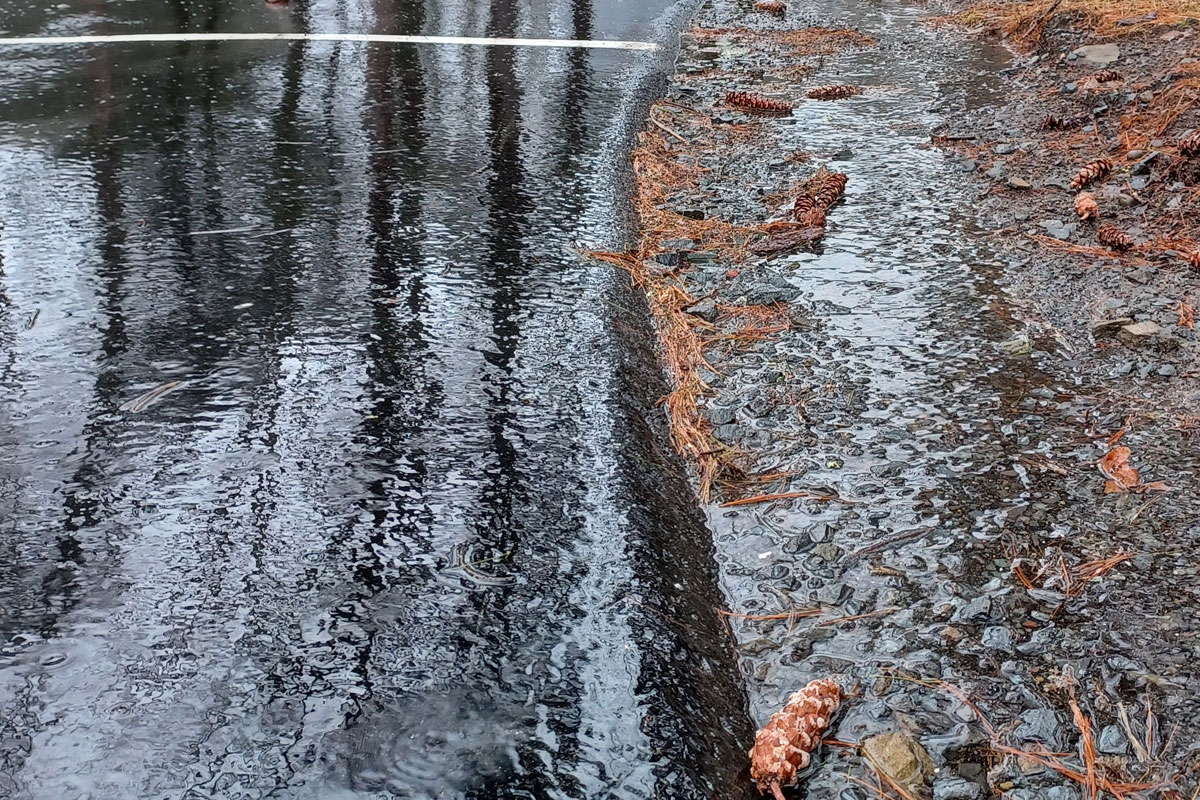
Stormwater Management for Residential Properties

By PCCD District Engineer Chris Meszler
Rainstorms happen all the time and are just a part of the water cycle. The stormwater will flow over land to bodies of water or infiltrate into the ground to replenish the water table. Though stormwater runoff is a necessary part of the water cycle, it can also cause issues for homeowners, not that anyone tells you to think about the water cycle when buying a house. Some of these issues can be stormwater runoff flowing towards your house and ponding against the foundation, gravel driveways being washed out, and erosion rills being formed throughout your lawn, just to name a few. However, with some stormwater management best management practices (BMPs), issues resulting from stormwater runoff can be avoided.
First let’s talk about what stormwater management is. Stormwater as defined by Merriam-Webster is rainwater produced by a storm, and the Title 25 of the Pennsylvania code defines it as runoff from precipitation, snowmelt, surface runoff, and drainage. We can all agree that it is the water runoff that happens during and after a storm event. When we build homes, schools, hospitals, etc. there will be an increase in the water runoff from the storms due to the impervious (hard packed) surfaces that are associated with development. If this runoff is not managed, the earlier-mentioned issues will begin to arise (yes this is an Engineer’s attempt at a pun).
How does one go about managing the stormwater runoff? When we look to manage stormwater runoff, we want to make sure that we are slowing the rate, reducing the volume, and improving the quality of the runoff that leaves our property. Does a homeowner need to implement the large stormwater holding facilities like the local shopping centers have? Is an elaborate piping system needed? From a single-family homeowner’s perspective, no.
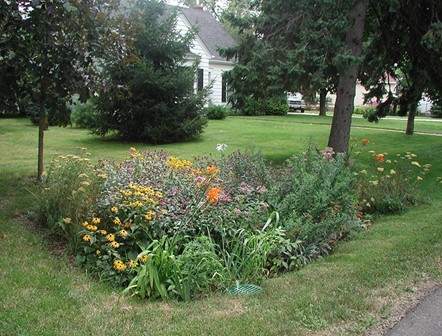
A rain garden on a residential property (See citation 1)
There are smaller scale BMPs that can be implemented to help manage the stormwater runoff on your property. These BMPs are rain gardens, infiltration berms, vegetated swales, permeable pavers, and rain barrels. Let’s discuss these BMPs in a little more detail.
Rain Gardens
Rain gardens are typically a shallow depression that is planted with native vegetation. This allows a place for the stormwater to be captured and treated. These depressions are usually designed with minimal water ponding depth (12” or less) with an outflow structure to bypass high flow events. The native vegetation used should be tolerant of variability in water and deep rooted. This BMP is not only good for stormwater management, but can also be very aesthetically pleasing.
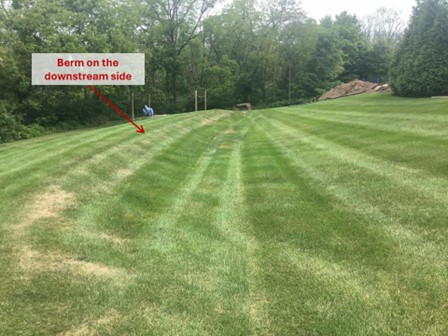
An infiltration berm implemented within a lawn area (See citation 2)
Infiltration Berms
Infiltration Berms are compacted mounds of earth typically located at the lower side of a gently sloping site. Berms can be used to capture stormwater runoff or create a barrier to divert runoff. Infiltration berms are usually designed to be equal to or less than 2 feet in depth and have side slope shallow enough to be mowed. These berms should be vegetated with turf grasses or a meadow type seed mix but should not be planted with trees or shrubs as they can compromise the berm’s structural integrity.
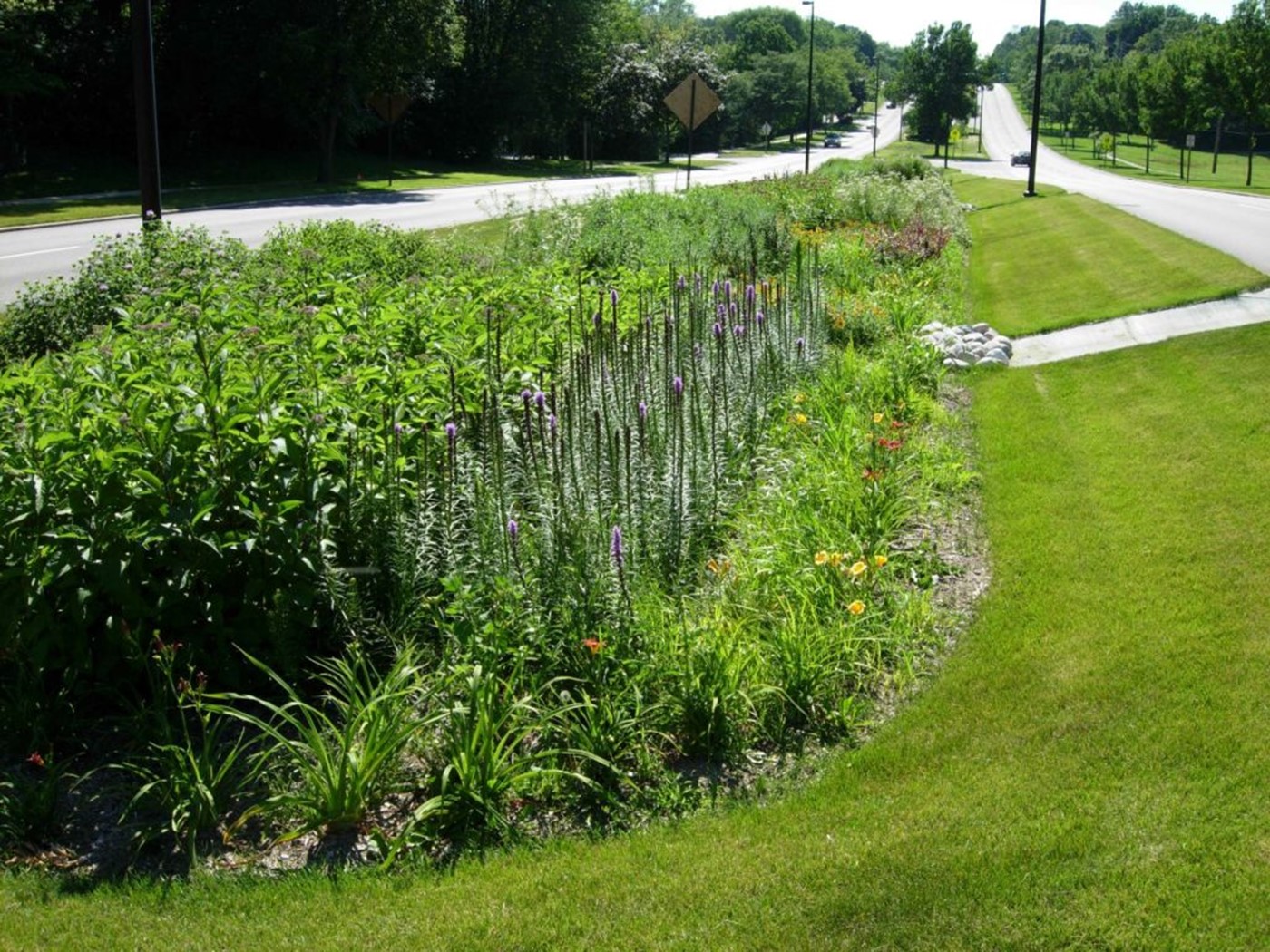
Vegetated Swale between two streets (See citation 3)
Vegetated Swales
Vegetated swales can be broad, shallow, or trapezoidal channels that are typically planted with a variety of shrubs, trees, and/or grasses. Swales are most commonly designed to convey stormwater runoff to a BMP or a surface water, but if designed at a shallow bed slope they can be used to manage the rate and water quality of stormwater runoff. To help manage runoff, the swales are designed to have a bottom width of 2 to 8 feet with bed slopes being between 1 and 6 percent. For the vegetation aspect, make sure it is low-growing native vegetation that is water-resistant and is drought and salt tolerant.
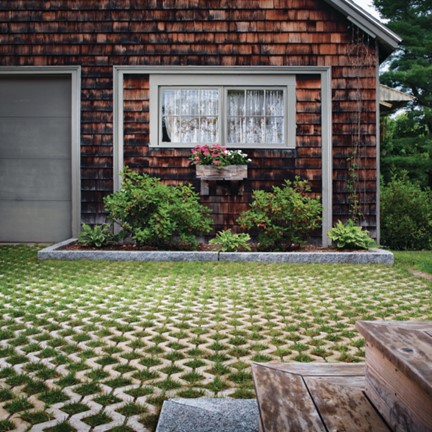
Permeable Pavers Installed in Homeowners Driveway (See Citation 4)
Permeable Pavers
Permeable pavers are paving stones that are porous and allow water to flow through them. Some permeable paving systems are made up of a traditional hard paving surface with wide stone or grass gaps between the pavers allowing for stormwater to infiltrate into the underlying soil. In some cases, the permeable paver systems have a layer of gravel underneath them to act as a storage area for stormwater runoff, which then allows that stored water to be infiltrated. These systems help with runoff rate as they look like an impervious surface but have properties of a pervious surface. These systems could be a good alternative to a traditional asphalt or concrete driveway.
Rain Barrels
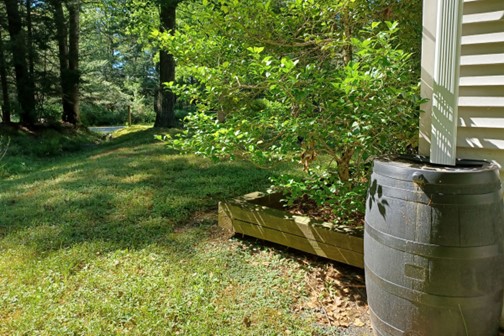
Rain Barrel installed at the Pike County Conservation District (See Citation 5)
Rain barrels are a type of capture and reuse system. They are mostly made out of plastic, have a spigot placed at the bottom of the barrel, and sometimes have a bypass measure in place for when the barrel is full. Rain barrels help with the management of volume, rate, and water quality. The rain barrel is a good BMP to be able to reuse stormwater runoff during drought conditions for watering the garden and other purposes.
The above BMPs are tools that can be implemented to help manage stormwater runoff and prevent potential impacts to your home, property, and surface waters. When deciding to use a BMP, make sure to check in with your Municipality that there are no permits or approvals required to complete the work. An engineer consultant may need to be contacted to assist in the design of a BMP. As rain storms will continue to happen and the runoff produced by these storms can lead to flooding, we as homeowners can help manage this runoff to minimize the flooding potential and protect natural features by doing our part to install BMPs when needed.
Photograph Citations
- Ocean County Soil Conservation District. Rain Gardens: An Environmentally Sound Solution to Stormwater Runoff. https://soildistrict.org/rain-gardens/
- New Hanover Township, Pennsylvania. Stormwater BMP Inspection Program. Photo Upload via ArcGIS Online Survey (found via Google Image search) https://www.newhanover-pa.org/information/stormwater_bmp_inspection_program.php
- Better Town Toolkit. Vegetated Swales: N21 | Nature Detail http://designyourtown.org/design_detail/vegetated-swales/
- S&S Pavers Blog. Modern Permeable Driveway: A Quick Guide https://sspavers.com/modern-permeable-driveway/ Photo of Belgard TurfstoneTM paver system.
- Pike County Conservation District. Conservation At Home https://pikeconservation.org/conservation-at-home/ (June 28, 2024).
